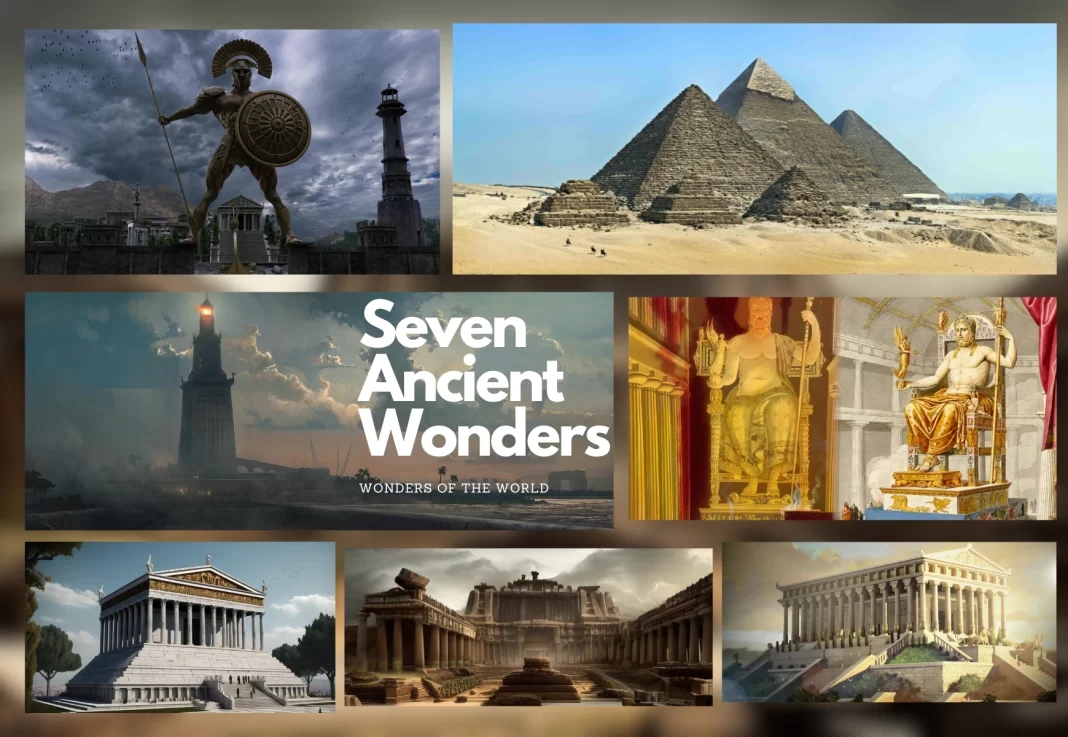The Seven Wonders of the Ancient World were famous buildings from long ago. People made a list of them around the 2nd–1st century BC.
Great Pyramid of Giza (Egypt)
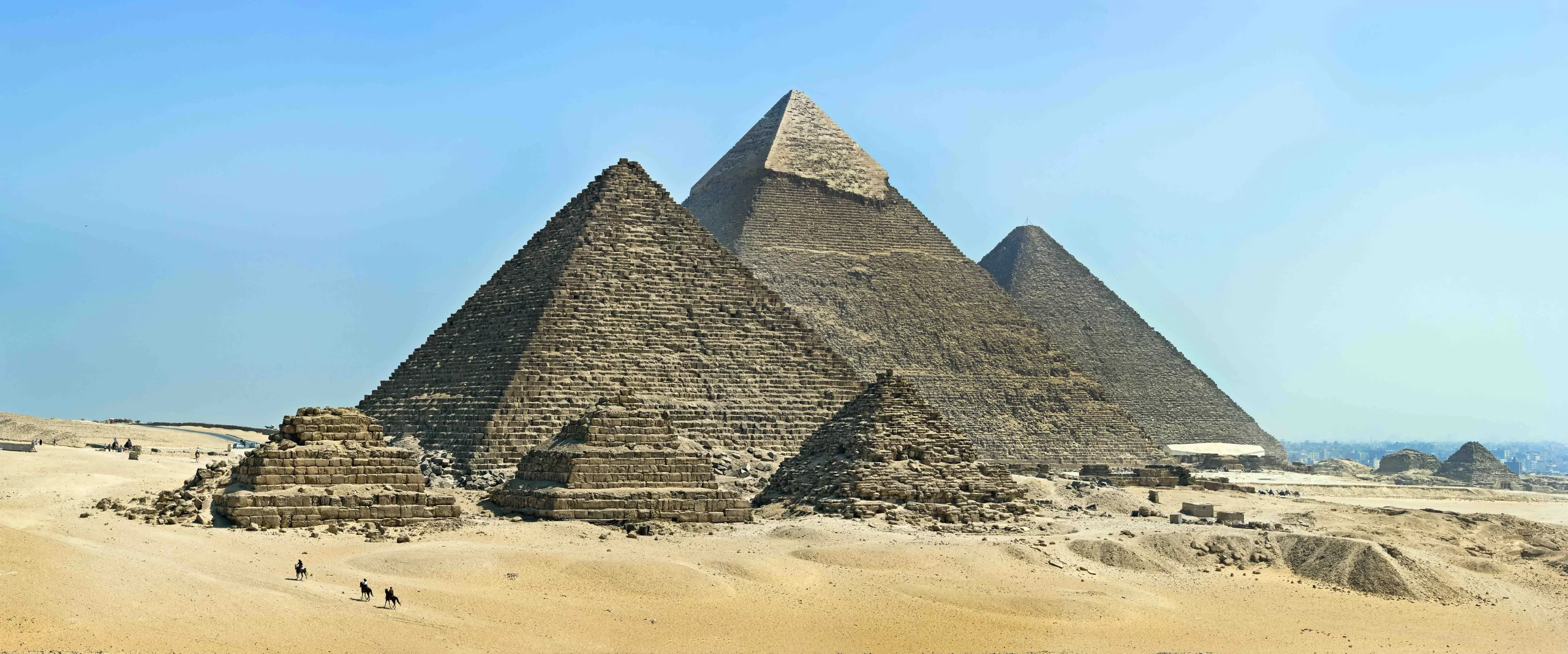
Located on the Giza Plateau near Cairo, Egypt, the Great Pyramid of Giza is the oldest and largest of the three pyramids in the Giza pyramid complex. It was built as a tomb for the Pharaoh Khufu (also known as Cheops) around 2560 BCE during the Fourth Dynasty of the Old Kingdom of Egypt. It is estimated that it took around 20 years to construct and was originally covered with smooth, white limestone casing stones, which have mostly been removed over time.
The precision and scale of its construction, especially considering the limited technology available at the time, make it a testament to the ingenuity and skill of the ancient Egyptians.
Date of construction: 2584–2561 BC
Builders: Egyptians
Date of destruction: Still in existence, majority of façade gone
Cause of destruction:
Modern location: Giza Necropolis, Egypt 29°58′45.03″N 31°08′03.69″E
Architect Hemiunu (presumed)
Constructed c. 2600 BC (Old Kingdom); 4624 years ago
Type True pyramid
Material Limestone, mortar, granite
Height Original: 146.6 m (481 ft) or 280 cubits
Current 138.5 m (454 ft)
Base 230.33 m (756 ft) or 440 cubits
Volume 2.6 million m3 (92 million cu ft)
Slope 51°50’40” or seked of 5+
Part of: Memphis and its Necropolis – the Pyramid Fields from Giza to Dahshur
Criteria: Cultural: i, iii, vi
Reference: 86-002
Inscription: 1979 (3rd Session)
Area: Arab states
Hanging Gardens of Babylon (Iraq)

The Hanging Gardens of Babylon are one of the most elusive wonders of the ancient world, with no archaeological evidence definitively confirming their existence. According to ancient texts, they were a series of terraced gardens built in the ancient city of Babylon, near present-day Hillah, Babil province, in Iraq. They were said to have been constructed by King Nebuchadnezzar II around 600 BCE, purportedly to please his wife who missed her homeland’s green hills and valleys.
The gardens were described as an engineering marvel, with lush vegetation, cascading waterfalls, and elaborate irrigation systems designed to create a verdant oasis in the midst of a desert landscape.
Date of construction: c. 600 BC (evident)
Builders: Babylonians or Assyrians
Date of destruction: After the 1st century AD
Cause of destruction: Unknown
Modern location: Hillah or Nineveh, Iraq 32.5355°N 44.4275°E
Statue of Zeus at Olympia (Greece)
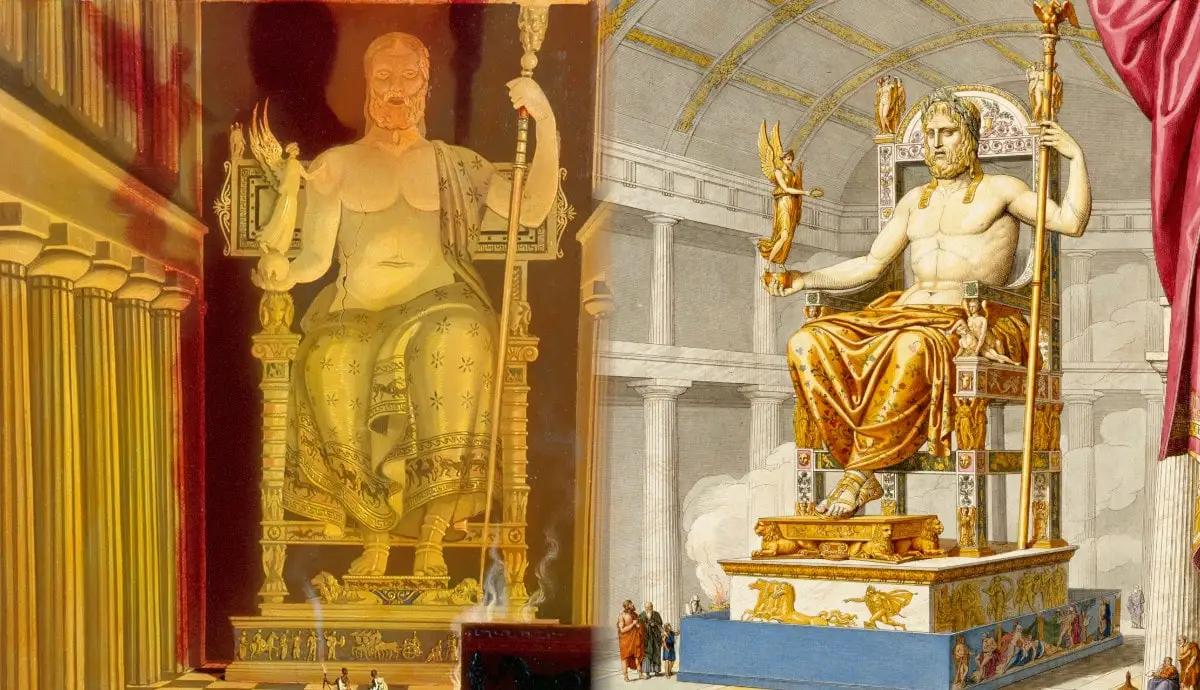
Renowned sculptor Phidias crafted the Statue of Zeus at Olympia around 435 BCE. It portrayed the Greek god Zeus in a colossal seated form, standing about 12 meters (40 feet) tall. The statue, made of ivory and gold, resided in the Temple of Zeus at Olympia, Greece, the site of the ancient Olympic Games.
The statue was celebrated for its awe-inspiring size and exquisite craftsmanship, capturing the grandeur and majesty associated with the king of the gods in Greek mythology.
Date of construction: 466–456 BC (temple) 435 BC (statue)
Builders: Greeks (Phidias)
Date of destruction: 5th–6th centuries AD
Cause of destruction: Disassembled and reassembled at Constantinople; later destroyed by fire
Modern location: Olympia, Greece 37°38′16.3″N 21°37′48″E
Temple of Artemis at Ephesus (Turkey)
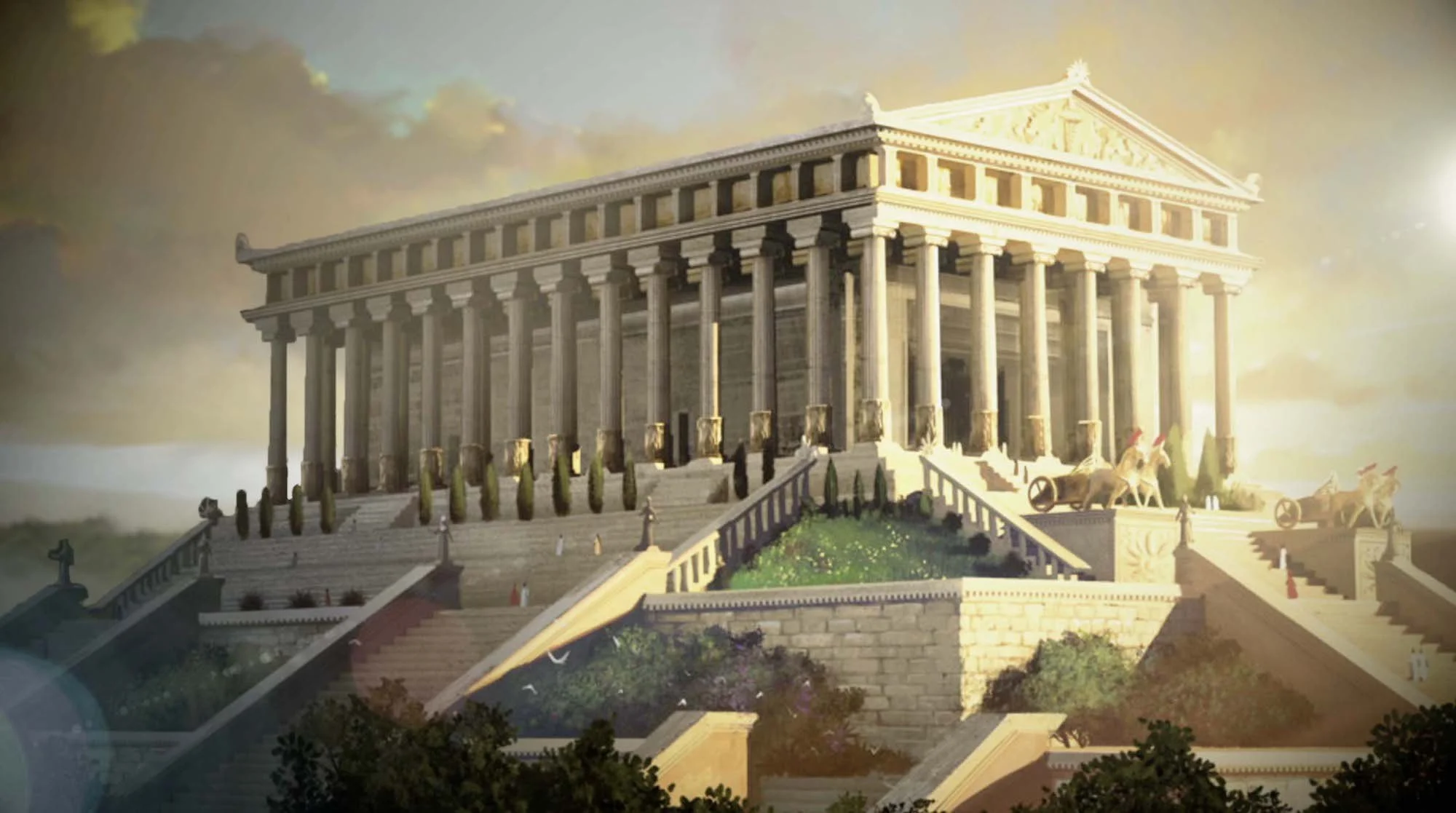
The Temple of Artemis at Ephesus, dedicated to the Greek goddess Artemis, stood near the ancient city of Ephesus, in present-day Turkey. Its most famous iteration, completed around 550 BCE, was one of the ancient world’s largest temples, measuring approximately 115 meters (377 feet) long.
Its grandeur and architectural splendor, including its impressive columns and adorned friezes, made it a symbol of devotion and a marvel of ancient engineering.
Date of construction:c. 550 BC; and again in 323 BC
Builders: Greeks, Lydians
Date of destruction: 356 BC (by Herostratus) AD 262 (by the Goths)
Cause of destruction: Arson by Herostratus, plundering
Modern location: Near Selçuk, Turkey 37°56′59″N 27°21′50″E
Mausoleum at Halicarnassus (Turkey)
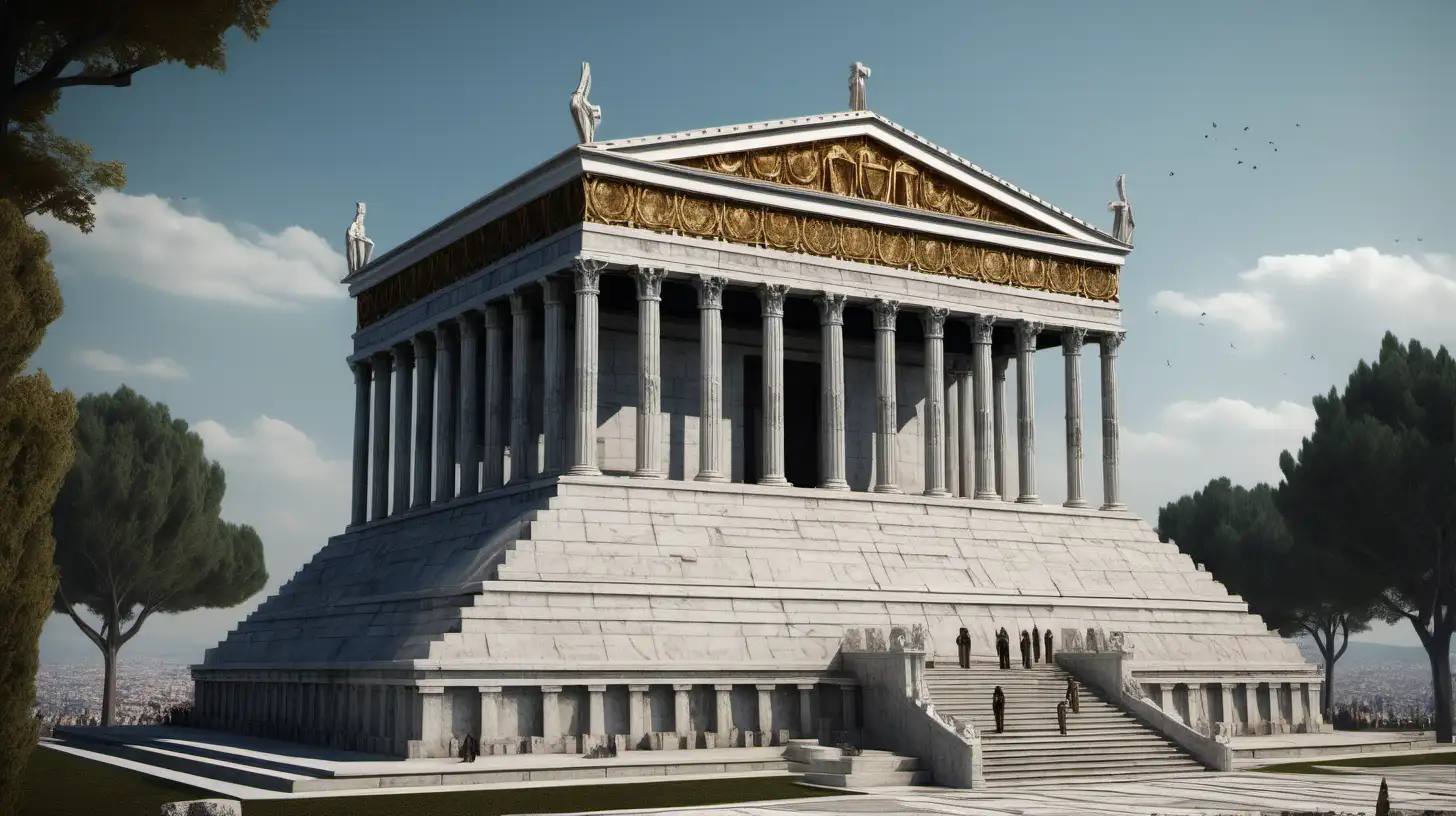
The Mausoleum at Halicarnassus, a grand tomb for Mausolus, a Persian satrap, and his wife Artemisia II, was built between 353 and 350 BCE in Halicarnassus (modern-day Bodrum, Turkey). Standing about 45 meters (148 feet) tall, it featured intricate sculptures and reliefs.
The mausoleum was celebrated for its architectural beauty and the artistic mastery displayed in its sculptural decorations, setting a standard for subsequent monumental tombs.
Date of construction:c. 351 BC
Builders: Greeks,[13][14] Persians, Carians (Satyros and Pythius of Priene)
Date of destruction: 12th–15th century AD
Cause of destruction: Earthquakes
Modern location: Bodrum, Turkey 37.0379°N 27.4241°E
Colossus of Rhodes (Greece)
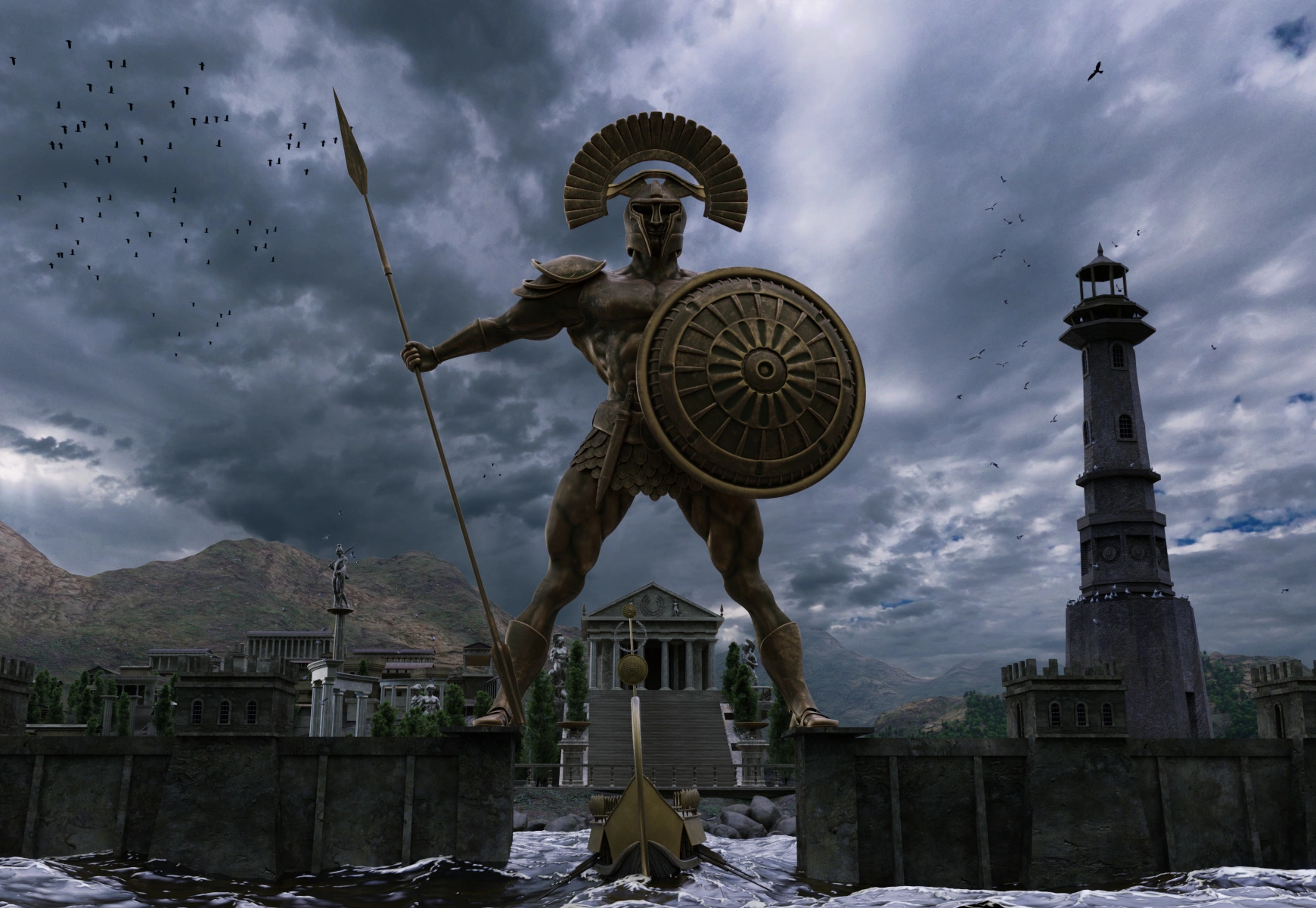
Erected on the Greek island of Rhodes around 280 BCE, the Colossus of Rhodes was a giant bronze statue of the sun god Helios, standing approximately 30 meters (about 100 feet) tall. It was built to commemorate Rhodes’ victory over the ruler of Cyprus and was one of the tallest statues of the ancient world.
Its immense size and the engineering feat of creating such a monumental bronze sculpture made it a wonder of its time, symbolizing the unity and strength of the people of Rhodes.
Date of construction:c. 292–280 BC
Builders: Greeks (Chares of Lindos)
Date of destruction: 226 BC
Cause of destruction: Destroyed by earthquake
Modern location: Rhodes, Greece 36°27′04″N 28°13′40″E
Lighthouse of Alexandria (Egypt)
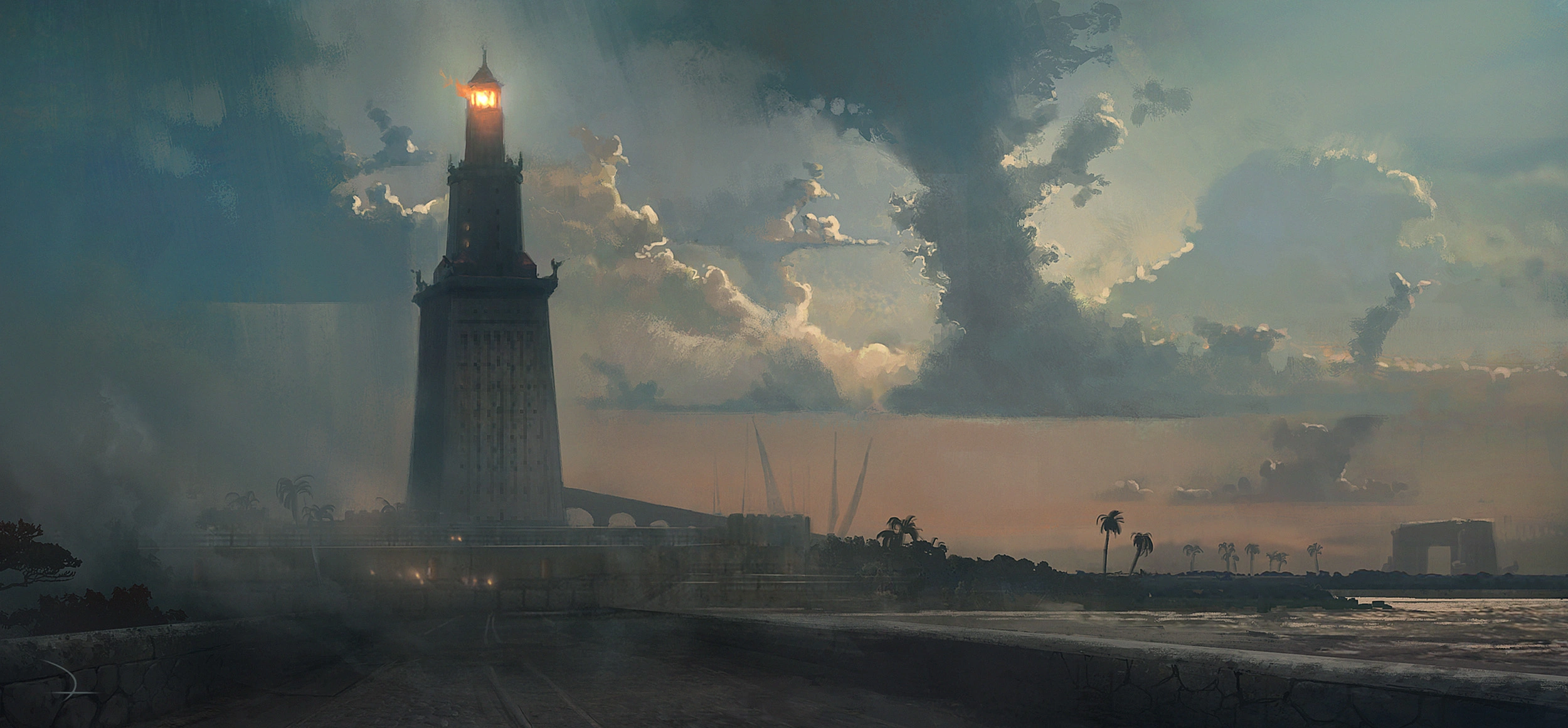
Also known as the Pharos of Alexandria, the Lighthouse of Alexandria was a towering structure built on the island of Pharos in Alexandria, Egypt, around 280 BCE. Standing between 115 and 135 meters (380 and 440 feet) tall, it was one of the tallest man-made structures of the ancient world and served as a navigational aid for ships entering the busy harbor of Alexandria.
Its innovative design and use of mirrors to reflect sunlight at night made it a marvel of ancient engineering and a symbol of the cultural and scientific achievements of the Hellenistic period.
Date of construction: c. 280 BC
Builders: Greeks, Ptolemaic Egyptians
Date of destruction: AD 1303–1480
Cause of destruction: Destroyed by earthquake
Modern location: Alexandria, Egypt 31°12′50″N 29°53′08″E

